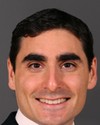Good morning, and thank you very much for the opportunity to speak with the committee today.
I'm speaking to you today not just as an MR scientist, but also as the founding president of the International Society of Neurovascular Disease, which is in the formation process at the moment. The goal of this society is to promote the research and treatment of chronic cerebro-spinal venous insufficiency.
For the last four years I have been proposing that MS is related to the small veins in the brain, and I was invited by Paolo Zamboni to present my independent work at his workshop in Bologna last September. Since Zamboni first presented the CCSVI hypothesis, more than 1,000 people have been imaged and more than 500 MS patients have been operated on.
Many of these people show no obvious effects from the surgery, but many people do. Some of them recover their energy, their continence, and their motor capabilities. These are by themselves impressive. The question is how many cases are enough to draw the attention of this issue to the professional societies, such as the neurologists, the Canadian government, and other places?
The wait-and-see attitude of the neurological community, in my opinion, is simply wrong. The evidence for venous vascular abnormalities in MS patients is now overwhelming. The main goal at this time is not whether we should get funding to continue to pursue investigation of this point, but rather that we need funding to sub-categorize the different sources of CCSVI, as shown in part on the five slides I sent to Dr. McDonald. I hope he has received those.
To design a double-blinded study, we need to know how to classify these lesions before we can understand why some people might recover better from surgery than others. To get this information we must collect data in hundreds, if not thousands, of cases. Patients need to know the lesion content, iron content, and the vascular status in their brain, neck, and spine before they have their surgery in order to monitor how things change after their surgery.
The questions of the highest import are whether the patient stabilizes or not, whether the patient gets better, and whether the lesions and abnormalities tend to subside.
If it's possible to show the few slides I have, this would be an appropriate moment to do so. If that's not possible, I will just continue.
Is Sandy McDonald able to show those slides?



